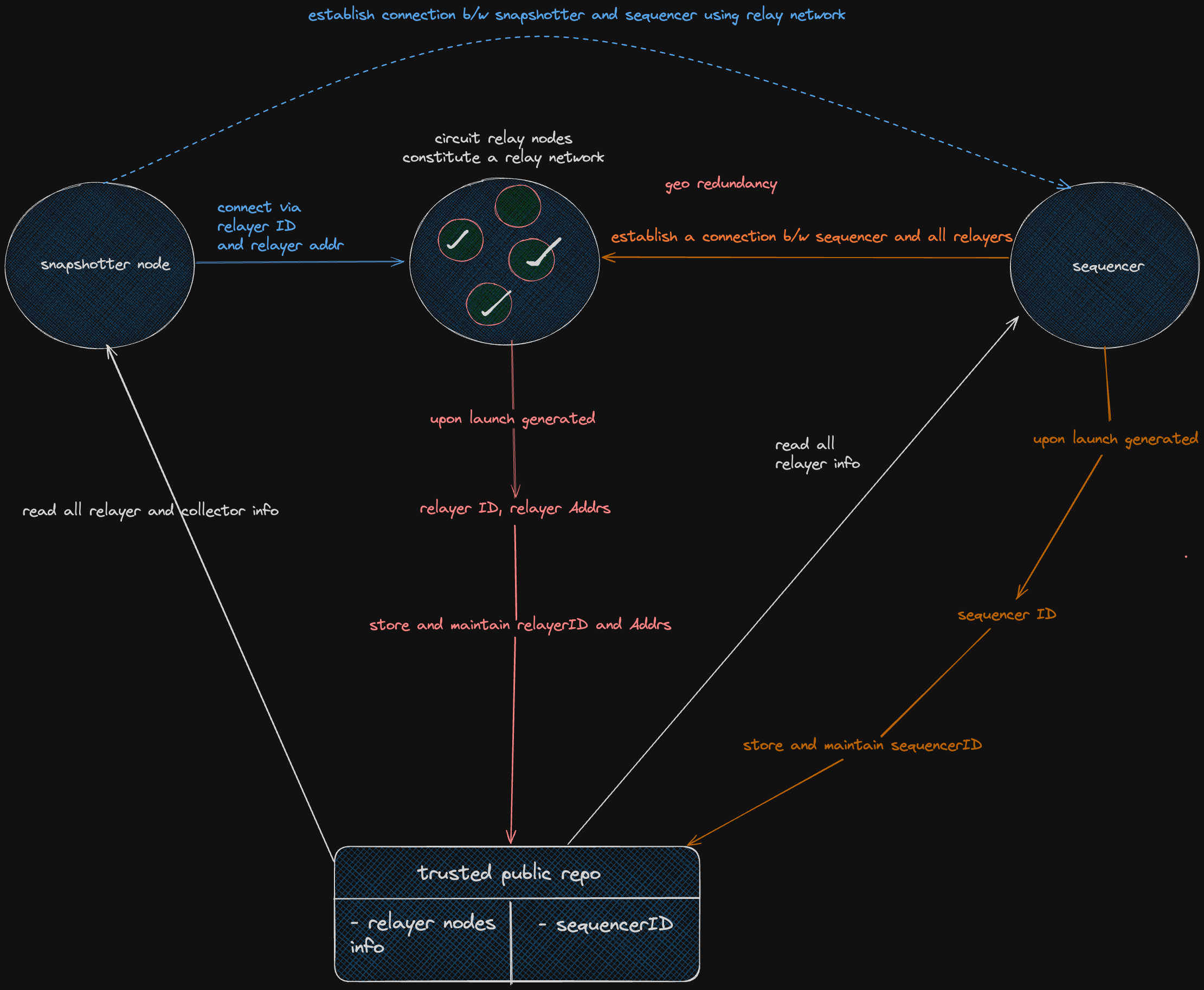Circuit Relayers
Circuit relayers are currently not being supported for the pre-mainnet and mainnet networks on Protocol V2 after certain security considerations. We are working on a solution to support this in the future.
The trusted list of sequeuncer interfaces can be found on our Github repository in this JSON file:
Recap
Powerloom Protocol V1 that powered the Incentivized testnets and the Lite Node testnet were able to submit their snapshots to the protocol state in the following manner:
- The nodes submit their snapshots over HTTP to the relayers as EIP-712 signed message objects
- The relayers submit each node's submission against each project ID as individual smart contract transactions to the method
submitSnapshot()
What's new in V2
V2 relayers make use of the circuit relay transport protocol as implemented by the libp2p project. Briefly stated, this has two major advantages:
- Faster, lightweight connections
- Avoids overheads associated with HTTP connections: connection management, establishment, pooling, message payload size
- More geographically available and censorship resistant
To quote from the docs on circuit relays,
When a peer isn’t able to listen on a public address, it can dial out to a relay peer,
which will keep a long-lived connection open.
Other peers will be able to dial through the relay peer using a
`p2p-circuit` address, which will forward traffic to its destination.
Connection overview
As stated in the Protocol V2 overview, the circuit relay nodes ultimately allow the snapshotter nodes to connect and submit to the sequencer node. This is intermediated further by the Rendezvous protocol.
Rendezvous points are typically nodes that are well-connected and stable in a network and can handle large amounts of traffic and data. They serve as a hub for nodes to discover.
The setup for the nodes includes env details that encapsulate sequencer ID(s), and the rendezvous points which intermediate and facilitate the connection between snapshotters, relayers and sequencer(s).
Final destination: Sequencer
The circuit relay nodes ultimately allow Snapshotters on the Powerloom network, located anywhere in the world, to submit their snapshots to the sequencer.

In future upgrades of the protocol, we will begin supporting a decentralized network of sequencers with its own incentive and reward structure.